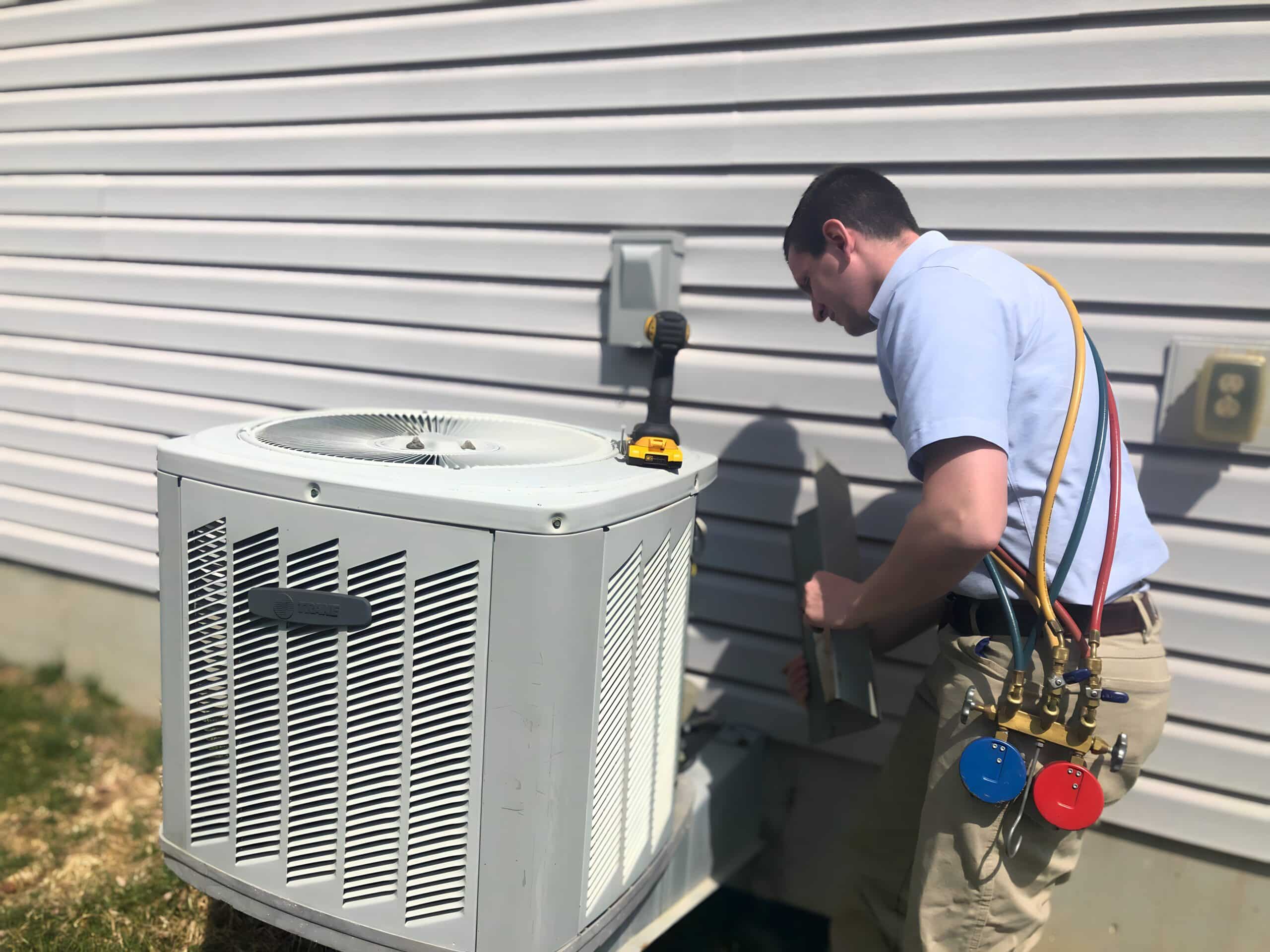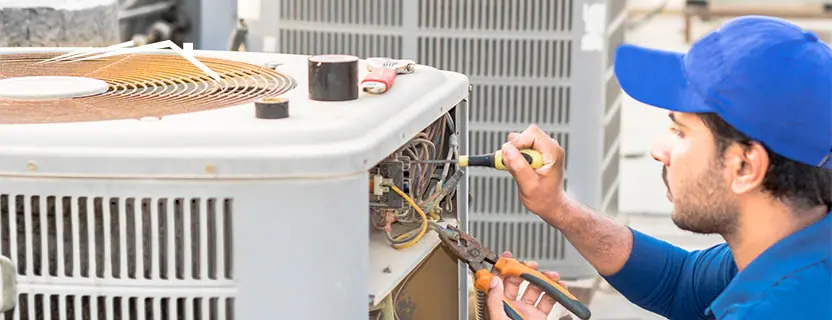Essential Insights About ductless mini splits Before You Upgrade
Essential Insights About ductless mini splits Before You Upgrade
Blog Article
Exactly How a Warmth Pump and Heater Collaborate to Maximize Your Home's Heating Effectiveness
Recognizing how a heatpump and heating system collaborate is important for home owners seeking efficient heating solutions. Each system has its staminas, offering a well balanced approach to home comfort. The warmth pump masters moderate temperatures, while the furnace delivers rapid warmth during severe cold. This synergy not just reduces energy expenses however also improves the lifespan of both home appliances. What elements affect this collaboration, and how can property owners optimize their advantages?
Comprehending Heat Pumps: Exactly How They Function
Although many individuals may be not familiar with their inner functions, heatpump play a vital duty in contemporary heating unit. These gadgets operate by transferring heat from one location to an additional, using the principles of thermodynamics. In chillier months, a warm pump essences warm from the outdoors air, ground, or water, and transfers it inside to warm the home. Conversely, during warmer months, it can reverse the process, acting as an air conditioning system by getting rid of heat from inside to the outside.Heat pumps include an evaporator, development, condenser, and compressor valve. The refrigerant within the system takes in heat as it vaporizes at low temperature levels and pressures. The compressor then increases the stress and temperature of the cooling agent, permitting it to launch heat as it condenses. This efficient process can greatly reduce power consumption contrasted to traditional heating techniques, making warmth pumps a lasting selection for environment control in homes.
The Role of Furnaces in Home Heating
Heating systems play a vital function in home heating by offering a trusted resource of warmth during the cooler months. They run by creating warm with burning or electric resistance, distributing it throughout the home via ducts or radiant systems. The efficiency of a heater is often measured by its Yearly Gas Application Performance (AFUE) score, which shows just how efficiently the system converts gas into heat.Furnaces can utilize various power resources, including gas, oil, power, or propane, allowing home owners to select one of the most appropriate alternative for their requirements. Unlike heat pumps, which might struggle in severe cold, heating systems keep constant efficiency, guaranteeing that interior temperatures continue to be comfortable no matter of outdoor problems. In addition, contemporary heaters commonly come geared up with innovative technology, such as wise thermostats and variable-speed blowers, boosting their efficiency and responsiveness. This convenience makes heating systems an essential element in comprehensive home heating techniques.

Benefits of Using Both Equipments With Each Other
Combining the toughness of both furnaces and heatpump can result in a much more effective and efficient home heating solution. Making use of both systems allows homeowners to take benefit of the heatpump's energy effectiveness during milder temperature levels while depending on the heater for even more extreme cold conditions. This dual method can significantly lower power expenses, as heatpump eat much less electrical energy than conventional heating approaches when temperature levels are moderate.Additionally, using both systems with each other can improve comfort degrees in the home. Warm pumps can provide regular, even home heating, while heating systems can quickly elevate ambient temperature levels when required. The assimilation of both systems can prolong the lifespan of equipment by reducing wear and tear on each device, as they share the work. Ultimately, home owners can take pleasure in a well balanced, affordable home heating service that adjusts effortlessly to varying weather conditions, ensuring a cozy and inviting home throughout the cold weather.
Just How Heat Pumps and Furnaces Enhance Each Various Other
They develop a corresponding heating system that optimizes efficiency and convenience when homeowners integrate warm pumps and heaters. Heatpump run by transferring heat from the outside air or ground, making them extremely reliable in modest climates. They excel during milder temperatures, supplying cost-efficient heating. On the other hand, heating systems create heat via burning or electric resistance, delivering strong, instant warmth during extreme cold conditions.The combination of these two systems permits for dynamic adjustments based on temperature changes. During warmer months or milder wintertime days, the warm pump can take the lead, saving energy and decreasing costs. As temperatures drop, the furnace can seamlessly engage, ensuring consistent warmth throughout the home. This harmony not just enhances energy usage yet additionally boosts the lifespan of both systems, as each device runs within its ideal performance array. With each other, they create a well balanced atmosphere that adapts to varying climate needs.
Enhancing Efficiency: Tips for Homeowners
Homeowners can boost their heating efficiency via a number of practical approaches. Developing a regular upkeep routine, incorporating wise thermostat technology, and implementing reliable insulation and sealing remedies are crucial steps. These actions not only boost comfort yet likewise lower energy prices.
Routine Upkeep Arrange
To assure maximum home heating effectiveness, establishing a normal upkeep schedule is crucial for any type of home. Homeowners must focus on routine inspections of both heatpump and furnaces to establish peak efficiency. This includes altering air filters each to three months, as stopped up filters can greatly minimize performance. Additionally, scheduling specialist upkeep at least yearly permits specialists to recognize and resolve prospective issues before they intensify. House owners need to also clean up the heatpump's exterior unit to stop debris accumulation that can impede air movement. By adhering to a routine upkeep timetable, homeowners not just improve their heating unit' performance however additionally expand their life-span, leading to higher comfort and decreased energy expenses throughout the chillier months.
Smart Thermostat Combination
Integrating a smart thermostat into a home furnace can greatly boost power effectiveness, particularly as it permits precise control over temperature level setups. These gadgets can learn the homeowner's timetable and preferences, automatically readjusting the temperature level to enhance comfort while minimizing power usage. They can reduce heating throughout times when the home is empty, lowering unnecessary intake. Lots of clever thermostats likewise give real-time energy use data, enabling home owners to make educated choices regarding their home heating practices. In addition, remote gain access to using mobile phone look at here applications allows customers to adjust settings from anywhere, ensuring the home is warm upon return. Overall, wise thermostat assimilation not only enhances comfort however substantially contributes to power savings and performance.
Insulation and Sealing Solutions
Smart thermostats play an essential function in power effectiveness, yet their efficiency can be considerably enhanced by appropriate insulation and sealing solutions. House owners need to prioritize protecting floorings, walls, and attics to minimize warm loss. Top quality insulation products, such as spray foam or fiberglass, can greatly enhance thermal resistance. Additionally, sealing voids around ducts, doors, and home windows avoids chilly air infiltration and heat escape. Weatherstripping and caulking work approaches for dealing with these leaks - heat pump installation ooltewah tn. Regular inspections for air leaks, along with the use of blower door tests, can help identify problem locations. By spending in insulation and sealing, house owners can maximize the efficiency of their heating unit, eventually bring about minimized power intake and reduced energy expenses
Common Myths Concerning Warmth Pumps and Furnaces
What false impressions border warmth pumps and heating systems? Lots of individuals incorrectly believe that heat pumps are inadequate in colder environments. Actually, contemporary warm pumps are developed to operate effectively even in reduced temperature levels, offering dependable home heating throughout wintertime. An additional typical myth is that heaters are constantly extra efficient than warmth pumps. This depends on the specific power sources and effectiveness ratings of the devices in question. Some might also assume that using both systems simultaneously is unneeded, but as a matter of fact, this combination can enhance heating efficiency, particularly during severe weather. In addition, people typically think that warm pumps call for constant upkeep, when actually, they have similar upkeep needs to standard heater. By exposing these misconceptions, property owners can make even more enlightened decisions concerning their home heating options, eventually resulting in enhanced convenience and energy effectiveness in their homes.
Upkeep Considerations for Combined Equipments

Often Asked Questions
Can Warm Pumps Job Effectively in Very Cold Climates?
Heatpump can have a hard time in exceptionally cold climates due to lowered efficiency and warmth removal restrictions. However, innovations in innovation have actually brought about models developed for far better efficiency in such conditions, enhancing their feasibility in rough environments.
For How Long Do Warmth Pumps and Furnaces Usually Last?
Warmth pumps typically last 15 to twenty years, while heating systems have a lifespan of 15 to thirty years. Routine upkeep can extend their long life, making certain reliable procedure and lowering the demand for early substitutes.

What Is the Average Price of Setting Up Both Equipments?
The typical cost of Visit This Link mounting both a heatpump and a heater normally ranges in between $5,000 to $10,000 - heat pump service. Factors affecting this cost consist of system size, setup intricacy, and local labor rates
Are There Tax Incentives for Using Energy-Efficient Home Heating Systems?
Several house owners ask about tax motivations for energy-efficient home heating systems. Different government and state programs often use credit histories or rebates, urging the adoption of sustainable innovations to lower power consumption and promote environmental obligation.
Just how Do I Pick the Right Size Heatpump and Furnace?
Selecting the ideal dimension warmth pump and heater involves calculating the home's square footage, thinking about insulation high quality, and reviewing neighborhood environment. Consulting a specialist can assure perfect system performance and energy effectiveness based on particular requirements. ductless mini splits. Understanding exactly how a warm pump and furnace work together is essential for homeowners seeking reliable home heating remedies. In cooler months, a warmth pump essences warm from the outside air, ground, or water, and transfers it indoors to warm the living space. When house owners incorporate warm pumps and heaters, they produce a his explanation corresponding heating system that makes the most of efficiency and comfort. Warmth pumps run by moving heat from the outside air or ground, making them very effective in modest climates. Warmth pumps can battle in very cold environments due to minimized effectiveness and heat removal restrictions
Report this page